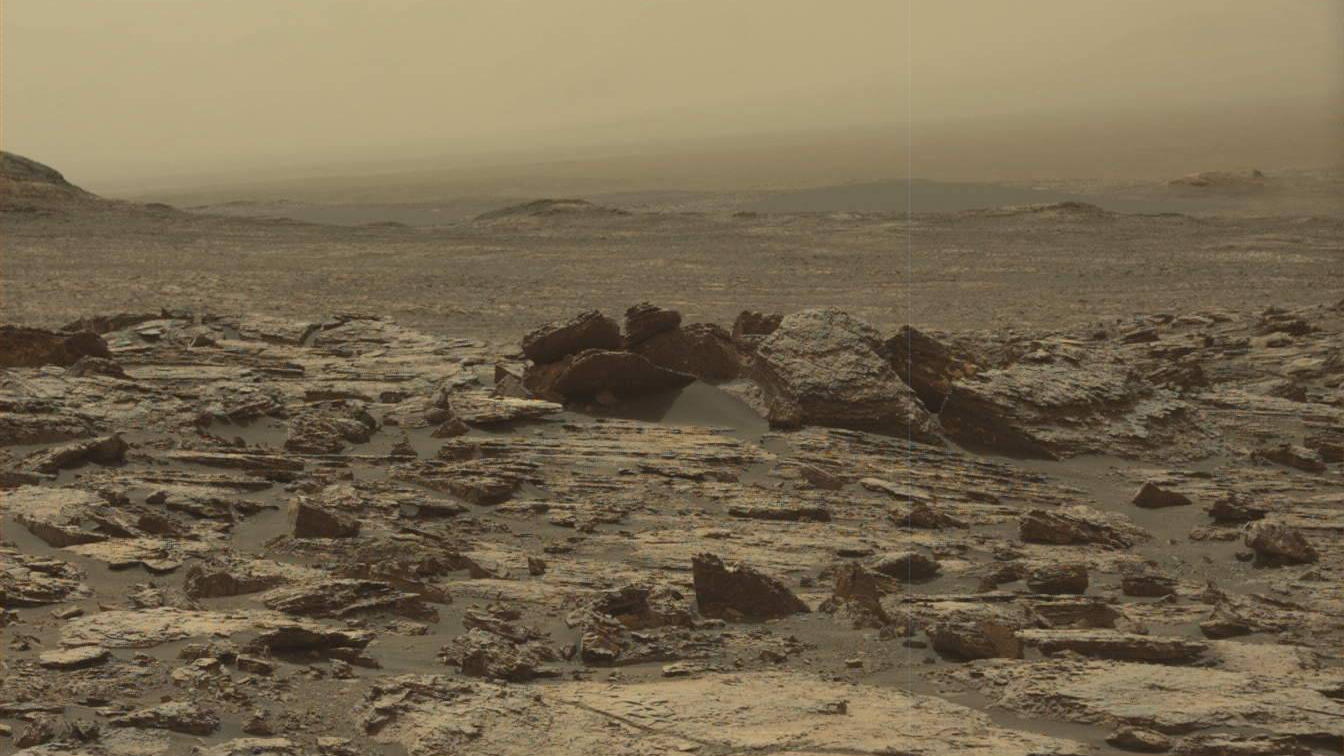As humanity casts its gaze towards the Red Planet, the Curiosity rover, a tireless explorer on the Martian surface, has unearthed a captivating discovery. Evidence suggests that a vast lake once graced Mars billions of years ago, and this ancient body of water might not have been barren of life. This finding, based on the presence of manganese oxide, paints a picture of a potentially habitable environment that could have fostered microbial life, adding another chapter to the ever-evolving story of Mars’s past.
A Chemical Signature Beckons: Curiosity Discovers Manganese Oxide
While traversing the expansive Gale Crater, Curiosity’s sophisticated instruments detected anomalously high levels of manganese oxide within the sedimentary rocks of the Murray Formation. On Earth, manganese oxide is a common constituent of lakebeds and river deltas, environments where oxidation processes are prevalent. Interestingly, microbes on Earth can even play a role in accelerating this oxidation process. The sheer abundance of manganese oxide unearthed by Curiosity is particularly intriguing. While smaller quantities found earlier could be explained by mechanisms not requiring significant oxygen, the recent discovery suggests a more robust oxidation process was at play. The presence of oxygen in large quantities on ancient Mars is a lingering question for scientists, prompting them to delve deeper into the mechanisms that might have driven this process.
Location Paints a Picture: Unveiling the Ancient Martian Landscape
The specific location of the manganese oxide deposits offers valuable clues in reconstructing the Martian past. The enriched rocks were found nestled between two distinct geological units within the Murray Formation – Sutton Island and Blunts Point. Scientific interpretation suggests that Sutton Island represents ancient lake-edge sediments, while Blunts Point points towards a deeper region of the lake. The coarser nature of the manganese-enriched mudstone, with larger grains compared to other areas in Gale Crater, further strengthens the theory of a shoreline or river delta environment. These locations would naturally accumulate larger-grained sediments due to the flow of water. The coarser texture also implies increased porosity, allowing for the passage of groundwater, which could have facilitated the concentration of manganese within the rocks.
A Potential Biosignature Emerges: Hints of a Microbial Past
The presence of manganese oxide is not just a testament to a watery past; it also hints at the possibility of microbial life. Microbes on Earth are known to not only catalyze the oxidation of manganese but can also utilize its various oxidation states as an energy source for their metabolisms. Therefore, the abundance of manganese oxide could be interpreted as an indirect biosignature, a potential indicator of past microbial activity. While definitive proof of life on Mars remains elusive, this discovery adds another intriguing piece to the puzzle, urging scientists to explore the possibility of a biosphere on the Red Planet.
A Habitable Oasis Awaits Further Exploration: A Testament to Curiosity’s Legacy
The findings from Gale Crater paint a fascinating picture of a bygone era on Mars. A vast lake, with conditions strikingly similar to certain Earthly environments, might have teemed with microbial life. This discovery underscores the potential habitability of ancient Mars and fuels the quest to unravel the secrets of the Red Planet’s past. While the exact source of the oxygen required for the observed oxidation process remains a mystery, future missions with more advanced capabilities might provide the key.

A Stepping Stone to Unveiling a Lost World: The Allure of Mars Beckons
The exploration of Mars continues to unveil a captivating story, and the Curiosity rover’s contribution to this ongoing saga is a testament to our unwavering pursuit of knowledge about our celestial neighbor. Curiosity’s relentless exploration paves the way for future missions, beckoning us to delve deeper into the Martian past and unlocking the secrets cradled within its ancient rocks. As we continue to explore the Red Planet, the possibility of a bygone Martian biosphere becomes a tantalizing prospect. The search for life beyond Earth takes an exciting new turn, and Mars, with its secrets slowly being revealed, emerges as a potential cradle of life in our cosmic neighborhood. This discovery is a stepping stone on the path to unraveling a lost world, and the coming era of Martian exploration promises to be an epic chapter in our quest to understand the history of life in the solar system. The Red Planet, once a cold and desolate vista, now beckons as a world with a potentially rich and complex past, waiting to be fully understood.



















